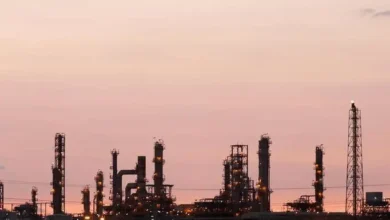
- The proportion of oil exports across the month rose to 70.44 percent of total output, marking the highest observed ratio in the previous seven months
RIYADH: Saudi Arabia’s crude exports hit a 4-month high at 6.3 million barrels per day in October, according to the most recent figures from the Joint Organizations Data Initiative.
This marked an increase of 543,000 bpd, or 9.44 percent ,compared to the previous month.
The proportion of oil exports across the month rose to 70.44 percent of total output, marking the highest observed ratio in the previous seven months.
The Kingdom’s crude production experienced a modest reduction of 35,000 bpd at 8.94 million bpd. This represented a marginal 0.39 percent decline from the production levels observed in September.
At the end of November, Saudi Arabia announced the extension of its voluntary crude output cuts, amounting to 1 million bpd, until the conclusion of the first quarter of 2024, in coordination with certain members of the Organization of the Petroleum Exporting Countries and its allies, known as OPEC+.
This decision, initially made in July, maintains the Kingdom’s crude production at around 9 million bpd until the end of March 2024. This voluntary cut supplements the 500,000 bpd announced in April 2023, extending until December 2024, aligning with OPEC+’s efforts to stabilize and balance global oil markets.
Additionally, Saudi Arabia is undergoing a significant transformation under the ambitious economic plan known as Vision 2030. With substantial investments in tourism, extensive infrastructure projects, and the development of financial and private sectors, the Kingdom is actively working to reduce dependence on oil, diversify income sources, and enhance overall competitiveness.
Crude oil direct usage
Saudi Arabia’s direct burn of crude oil, involving the utilization of oil without substantial refining processes, experienced a decrease of 75,000 bpd in October, representing a 12 percent decline compared to the preceding month. The total direct burn for the month amounted to 531,000 bpd.
The Ministry of Energy seeks to boost the contributions of natural gas and renewable sources as part of the Kingdom’s goal to achieve an optimal, highly efficient, and cost-effective energy mix.
This involves substituting liquid fuel with natural gas and incorporating renewables to constitute approximately 50 percent of the electricity production energy mix by the 2030.
As part of the Kingdom’s efforts to diminish its reliance on oil, the Dumat Al Jandal Wind Farm was inaugurated in 2019. This facility, which began operating in 2022, plays a crucial role in Saudi Arabia’s ambition to attain a 50 percent contribution of renewable energy to the overall energy mix by 2030.
With 99 turbines and a total capacity of 400 megawatts, it is the country’s first and largest wind farm, supplying electricity to around 70,000 homes. Beyond reducing reliance on oil and carbon emissions, the project brings economic benefits to the Al Jouf region by creating jobs and attracting foreign investment, as stated in Vision 2030.
Another contributing factor is Saudi Arabia’s increased imports of cost-effective fuel oil from Russia. As highlighted in a July report by S&P Global, the Kingdom has escalated its buying of Russian fuel oil and diesel in recent months. This surge is a response to Moscow seeking new markets and offering discounted cargoes amid Western sanctions related to the conflict in Ukraine, according to the report.
“Russian exports of fuel oil and diesel to Saudi Arabia climbed to an all-time high of 284,000 bpd in April, according to shipping data from Kpler. The volumes continue to flow, reaching 188,000 bpd in May and 192,000 bpd in June,” the report added.
Refined Products
The JODI data also revealed that the output from Saudi refineries, representing the processed and refined derivatives extracted from crude oil through the refining process, experienced a 27 percent decline compared to the previous month, reaching 2.12 million bpd.
Key components of Saudi refined oil products comprise gas diesel, primarily utilized in engines across various transportation modes and industries; fuel oil, incorporating a spectrum of heavy liquid petroleum products, which finds applications in heating, power generation, and maritime use; and motor and aviation oil, which consists of lubricants specifically formulated for internal combustion engines in both vehicles and aircraft.
Given its status as one of the world’s leading oil producers, Saudi Arabia plays a crucial role in supplying these refined products to meet global energy demands.
Gas diesel, constituting 45 percent of the total oil refined output in October, witnessed a 20.33 percent decrease in this period. Meanwhile, the motor and aviation sector, accounting for 23 percent of the refined output, saw a 30 percent decline, and fuel oil, comprising 19 percent, experienced an 18 percent reduction.
In addition, exports of refined oil products recorded a 20 percent decrease from the preceding month, totaling 1.04 million bpd.
The exported share of refined oil products increased, climbing from 45 percent in the previous month to 49 percent in October. Specifically, 47 percent of produced gas diesel, 38 percent of motor and aviation products, and 39 percent of fuel oil were exported during this period.




